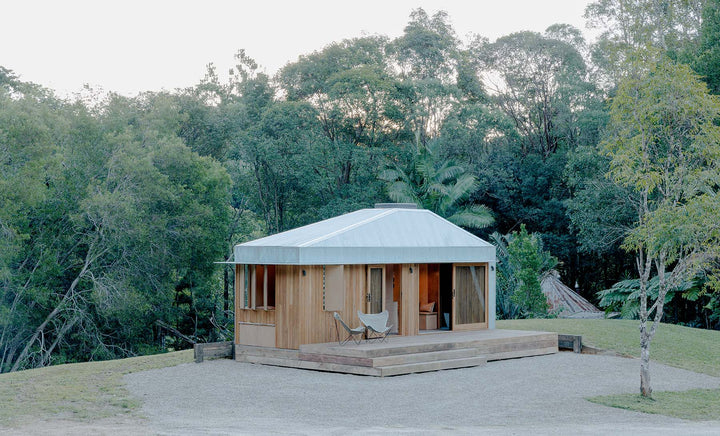Can you share your work history, how did you discover ceramics?
It actually took me some time before I found my passion for ceramics. I loved drawing portraits when I was a kid, so it was obvious to me that I would spend most of my life in the creative visual field, and very early on, I knew that I wanted to be a graphic designer. Before I enrolled in my BA, I had decided to take two years to study photography because I wanted to deepen my knowledge in this field. During those studies, I began to find my unique creative perspective and discovered an obsession with light, shapes, and composition.
Upon graduation, I started my Bachelor of Design in Visual Communication. There my drawing kept evolving, from a realistic to a minimal illustration style. Post-graduation, I began working as a graphic designer. A couple of years later, I moved to New York and decided that I should try to find new creative fields, which led me to take my first ceramic class. I loved working with my hands and getting a bit dirty. Very soon after, I knew that this would be my new career path.
What do you get out of working with your hands as a process and how is it different from other mediums
As a graphic designer, I worked mostly on the computer, which enabled me to create “flawless” work. I felt that I had to find the perfect composition, font and letter spacing, colours, and so on. Working with my hands in the medium of ceramics helped liberate me from this need, allowing me to express myself in a more intuitive way. It took me a while to change my mindset; when I created my first collection, I still thought that everything had to be flawless. But eventually, I began to understand that what makes handmade work so unique is the feel of the artist’s hands and all the beautiful imperfections that this brings along the way.

Where do you draw your influences and inspirations from?
Since drawing and illustrating faces is something that I’ve been doing for most of my life, it’s very natural for me to incorporate this into my ceramic work. But I also love taking inspiration from ancient art and antique pottery, especially from Egypt. Also, I’ve taken a lot of inspiration from photography. I love how light and shadow can create exciting compositions and make us look at a simple daily subject from an entirely new point of view.
Another influence on my work is the realisation that modern society makes us think that perfection is something we should always aspire to, even though it does not really exist. I was blind to this point of view for most of my life, so this is why it’s important for me to implement and deliver this message through my work. I believe that we are all different and unique and that we should learn to accept ourselves the way we are – with all of our beautiful flaws.

"I love how light and shadow can create exciting compositions and make us look at a simple daily subject from an entirely new point of view."


Can you talk through your making process, the techniques, the time required and the individuality that eventuates?
When I’m creating structures, I’m using a hand-building technique called “coiling.” It involves a slow process of stacking coils of clay and blending them with each other. I’m always trying not to overwork the shapes and the surfaces because I love the natural look that working with clay can produce. After creating the form, I let the piece get a little bit stiffer, and only then do I create the faces. I always sketch it first on top of the pieces with raw lumps of clay. This process usually takes the longest amount of time because it is important for me to give each piece its own individuality and uniqueness. This is why I never create replicas. I love the slow process – it helps me to keep exploring and to have a deeper connection to every piece I make.
Your pieces almost appear to have personalities, distinct human qualities, how do these develop or evolve in the making process?
Because I allow myself to work at a slower pace, I have the time and freedom to keep looking for new nuances in the composition, the proportions, and the facial expressions. I’m still always surprised by how every small nuance in shape can create an entirely different personality in each piece. When I’m concerned that my work is becoming repetitive, I go back to look at my older pieces and remember how each of them is so individual and one of a kind. It fills my heart to know the journey I have had with my work, from drawing realistic portraits as a kid to now creating ceramic pieces that each have their own personality and uniqueness.
See Miri Orenstein’s ceramic work – Kira Vase, Anna Vase and Kayla Vase, and at miriorenstein.com



